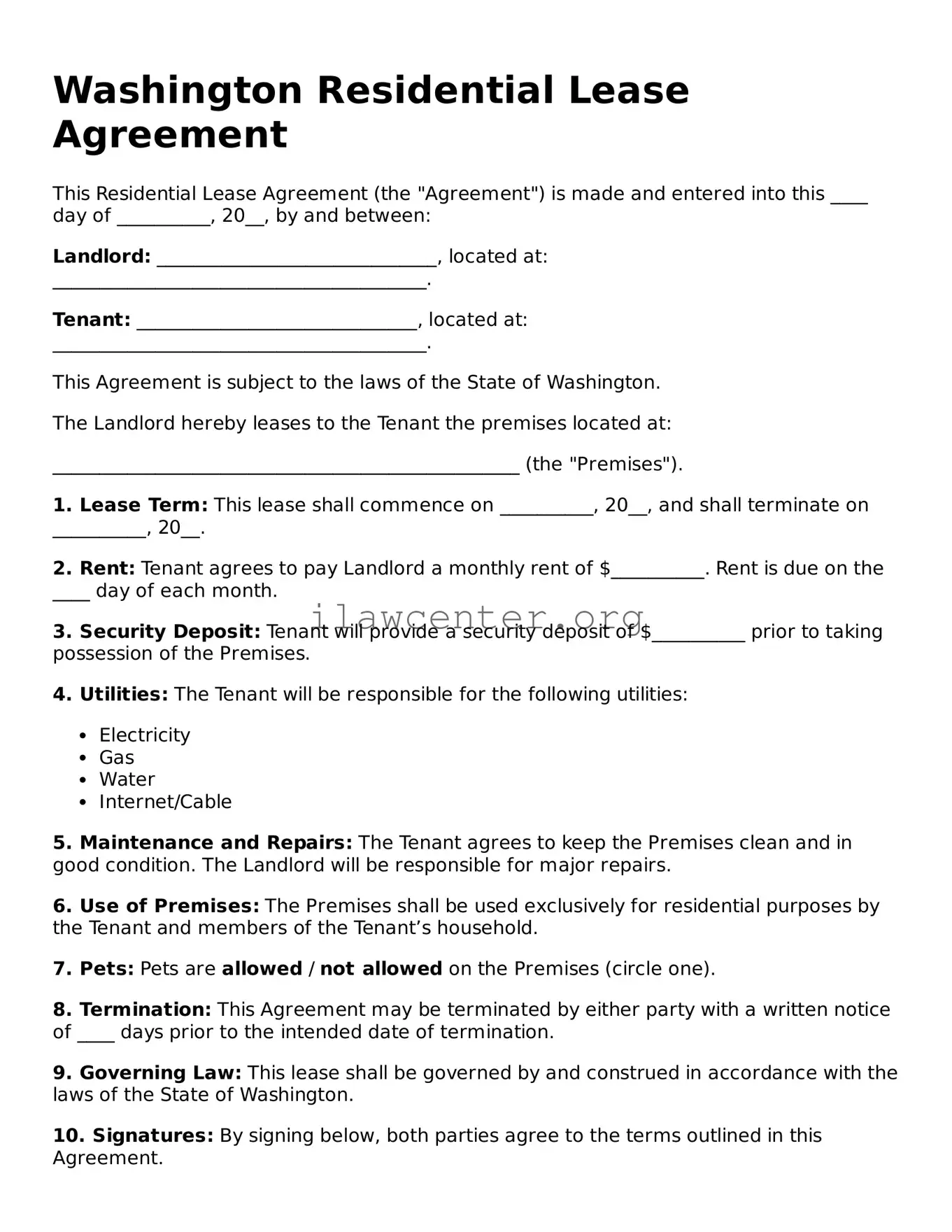Instructions on Utilizing Washington Residential Lease Agreement
Completing the Washington Residential Lease Agreement is an important step in securing a rental property. This process ensures both parties are clear about their rights and obligations. Below are the detailed steps to help you fill out the form accurately.
- Review the Document: Start by thoroughly reading the Residential Lease Agreement to understand its structure and sections.
- Fill in the Date: Write the date on which the lease agreement is being signed.
- Provide Tenant Information: Enter the full names and contact information for all tenants who will occupy the property.
- Landlord’s Information: Fill in the landlord’s name, address, and contact details.
- Property Address: Write the complete address of the rental property, including apartment number if applicable.
- Lease Term: Specify the duration of the lease, including the start and end dates.
- Rent Amount: Clearly state the monthly rent amount and when it is due each month.
- Security Deposit: Indicate the amount of the security deposit and the terms for its return.
- Utilities and Services: List which utilities are included in the rent and which are the tenant's responsibility.
- Pets Policy: Specify whether pets are allowed, and if so, what the rules and fees are.
- Signatures: Ensure all parties sign and date the agreement to acknowledge their acceptance of the terms.
As you fill out the form, ensure that all information is accurate and clear. Double-check your entries before signing. After completion, keep a copy for your records. This agreement will serve as a foundation for your relationship with your landlord. Take your time, and don't hesitate to ask for clarification if needed.
